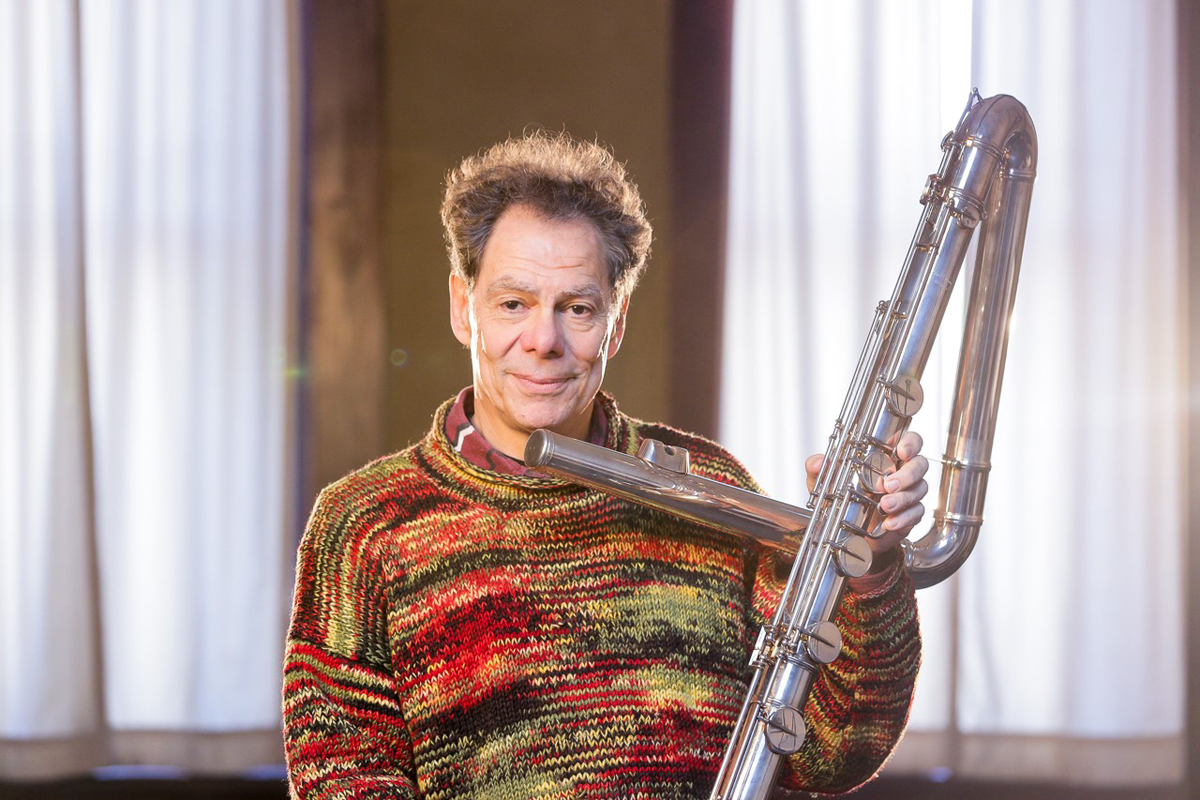
Robert Dick photo by Ben O’Brien Smith.
Wednesday, March 20, 8pm
PONCHO Concert Hall,
Cornish College of the Arts
710 E Roy St
The combination of voice and flute in modern music—each with their characteristic monophony, purity of sound, and relation to the breath—suggests a playful, enrapturing sound that dances among the silence. Yet, when the musicians at play direct their attention to the passage of breath itself and its interactions within their respective resonators, they have the ability to also conjure the rare, liminal spaces found inside the strains of voice, breath, and sound. Add to this picture two master improvisers whose voices have been preeminent on their respective instruments in our time, and whose musical dialogue has reached telepathic precision, fearless exploration, and remarkable empathy and you have Thomas Buckner and Rober Dick: Flutes and Voices.
Baritone vocalist Thomas Buckner is a celebrated new music vocalist with seemingly limitless technical ability and musicianship. He has extensive experience with an array of musical idioms, including longtime collaborations with the Association for the Advancement of Creative Musicians members Muhal Richard Abrams and Roscoe Mitchell.
Flutist Robert Dick is an ever-transformative master of his instrument, having developed more sonic possibilities on the flute (literally thousands) than any other before him. He is renowned for his invention of the Glissando Headjoint attachment, which functions in the same was as a whammy bar does for the guitar. Both musicians were, and continue to be, important contributors to the Downtown music scene in New York. Extraordinary artists on their own, their synthetic, style-breaking sensibilities seem to expand when together.
2019 marks the ten-year anniversary of their duo collaboration recording, Flutes and Voices. Comprised of eight improvised pieces of great diversity, each moment exists beautifully on its own terms. Buckner’s and Dick’s dialogue is ever dynamic in a perpetual state of moving towards, generating an experience verging on timelessness. Their non-sequitur titles including “Bones of the Tongue,” “In the Land of the Perfect Days,” “Broadcasted Alive,” and “Certain Gravities” evoke images of the imagined, the utopic, and the surreal, with hints of irony as if to demystify the musical processes. The titles seem to reflect a push and pull at work in the music, with the nonsensical signifiers insisting we give meaning to them mirroring the sonic repulsion-attraction quality present in their improvisations. If “Bones of the Tongue” were representative of the entire recording, then using the body as an analogy, their music is akin to what Brent Edwards, writing on Nathaniel Mackey’s poetry, calls “endlessly challenging the bodily rhetoric inherent in our expression—the connotative link for joint and articulation.”
Make no mistake, Buckner’s and Dick’s musical dialogue is one of joints, abrasion, splayed sound, and perpetual slippage into the unknown. There remains, however, an undeniable joy in their music. Their richly diverse improvisations teem on excess, and the uncapped range of human emotions is made manifest, speaking to their love of the craft and their camaraderie. Seattle audiences may very well come away with a new expanded sense of connectedness after this one.
—Carlos Snaider